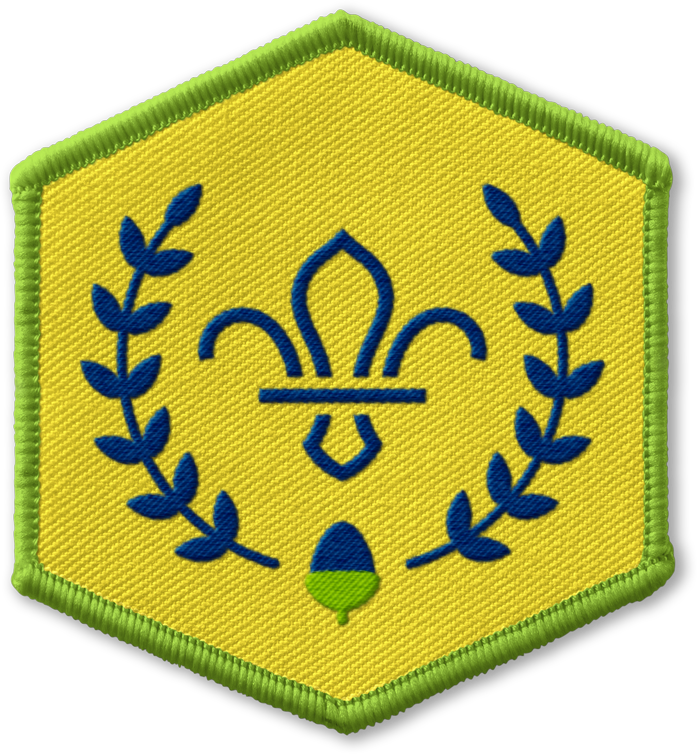
Chief Scout’s Award Kim’s game
You’ll need
- Tray
- Towel or Blanket
- Badges or printouts of the Challenge Awards
- Badges or printouts of correct number of Activity or Staged Badges needed for the section’s Chief Scout Award
- Timer
Before you begin
- Use the safety checklist to help you plan and risk assess your activity. Additional help to carry out your risk assessment, including examples can be found here. Don’t forget to make sure all young people and adults involved in the activity know how to take part safely.
- Make sure you’ll have enough adult helpers. You may need some parents and carers to help if you’re short on helpers.
Setting up the game
- Gather everyone together and explain that you’re going to play a version of Kim’s Game to help learn about the Chief Scout’s Award.
- You might want to run the game in small groups, rather than as a whole group. Remember, you’ll need enough items and trays for one per group. Make sure you can remove an item from the tray without the Scouts seeing and can keep it somewhere out of sight!
- Let everyone gather in their groups or around the tray as a whole group.
Play the game
- Place all the items on the tray. You could say what each item on the tray is or let the group handle them if needed.
- When everyone’s ready, give the group 30 seconds to look at the items and memorise what’s there.
- After 30 seconds, cover the tray with a towel or blanket, so no-one can see the items.
- Everyone should look away, or use their neckers as blindfolds, so they can’t see the tray.
- The person running the game should remove an item from the tray and place it out of sight.
- When ready, everyone needs to look at the tray again and work together to identify the missing item.
- People can move at their own pace, so you don’t need to make it competitive unless it works for everyone. To give everyone a chance to play, people could write down their ideas and have a few moments to think, rather than it being a race to say the missing item first.
- Return all the items to the tray and keep playing the game. When someone guesses correctly, the guesser can lead the game and choose the next item that’s taken off the tray. You could add different Activity or Staged Badges each time so the Scouts know how many badges are on offer to them and they can choose the ones they like most.
- When you’ve finished playing the game, explain that people need to achieve the number of Challenge Awards and Activity/ Staged badges on the tray to earn their Chief Scout’s Award – however, remember it’s just the number of them, not the specific badges that might be on the tray.
- Gather everyone back in a circle and chat about which badge or Challenge Award everyone would like to work towards next and how they can do it.
Reflection
This activity was all about learning about what people need to get to achieve their Chief Scout’s Award. How much did people know before starting the game? What have people learned?
Does everyone now know what goes into their Chief Scout’s Award? What do you think getting this Award shows to others?
What’s everyone doing that could help them achieve their next Challenge Award or an Activity/Staged Badge? Does anyone have any questions about the Award? How far are they already on their journey to getting it?
Safety
All activities must be safely managed. You must complete a thorough risk assessment and take appropriate steps to reduce risk. Use the safety checklist to help you plan and risk assess your activity. Always get approval for the activity, and have suitable supervision and an InTouch process.
- Active games
The game area should be free of hazards. Explain the rules of the game clearly and have a clear way to communicate that the game must stop when needed. Take a look at our guidance on running active games safely.
- If you want to make the game harder, use items to represent Challenge Awards and Activity Badges, rather than using images of the badges or the badges themselves. For example, you could use a compass for the Expedition Challenge or a screwdriver for the Skills Challenge.
- To make it easier, let the young people touch the items to help them memorise what’s there.
- If anyone needs help or struggles with fine motor skills, give them the opportunity to work in pairs with another young person, with a young leader or an adult volunteer. If picking up materials could be a challenge, people could work in pairs, too. You could swap out the items for something easier to handle.
- Make sure you check for any allergies, sensory issues, and fears or phobias. Be mindful to select objects around this.
- This game can be played sitting or standing – whichever way works best for everyone. Make sure the objects are placed in areas accessible for everyone in the group, including anyone using a mobility aid.
- If anyone doesn’t want to be blindfolded, they could close their eyes or use their hands instead.
- If anyone’s colour-blind, you may need to use different colours or different materials. Make sure to print the badges large enough for everyone to be able to see them, too.
All Scout activities should be inclusive and accessible.
Try the other activities for your Chief Scout Gold Award, Going for Gold and Chief Scout Award activity scrapbook.



